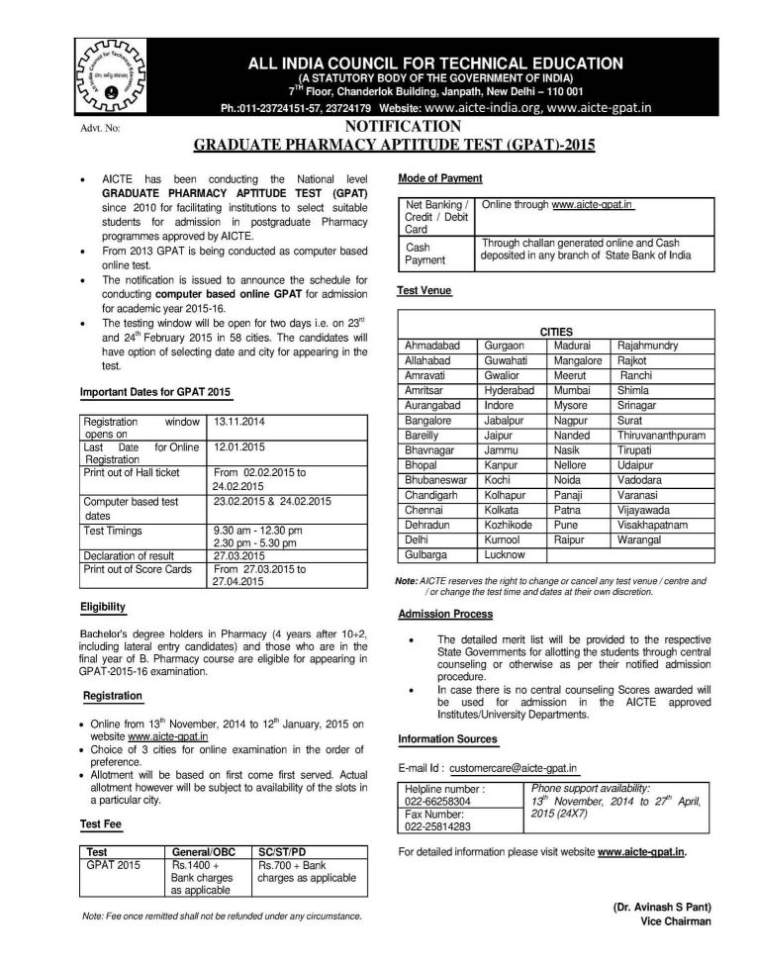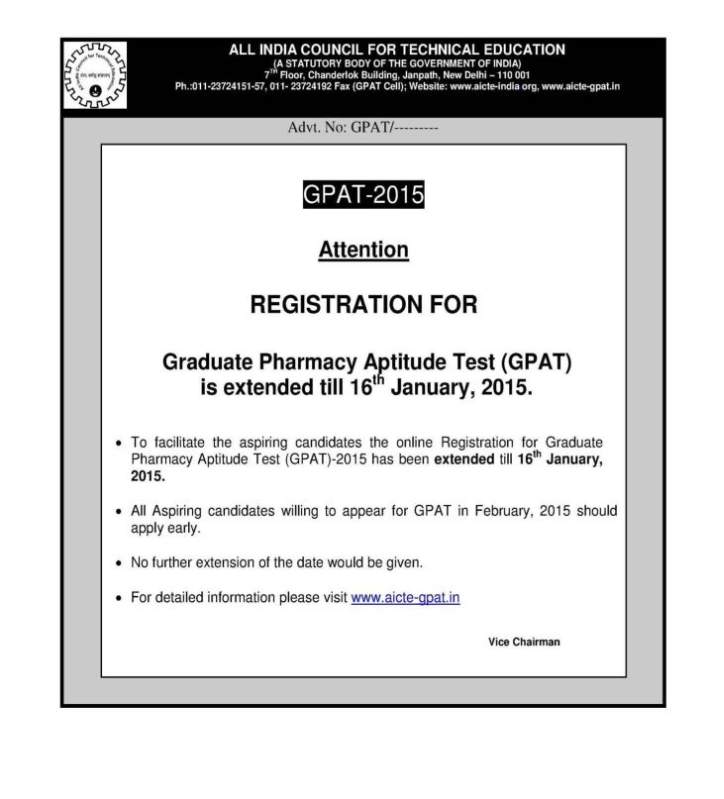|
#2
17th July 2015, 05:14 PM
| |||
| |||
| Re: Number of seats in GPAT
As you want to get the details of number of seats in Graduate Pharmacy Aptitude Test so here is the information of the same for you: I want to tell you that number of seats depends on the colleges which use GPAT as the process of their admission process. GPAT 2015 Eligibility Criteria: Candidates must have passed graduation in Pharmacy. Applicants pursuing last year of undergraduate pharmacy course are also eligible to apply for the entrance exam. GPAT 2015 Exam Pattern: GPAT 2015 exam will be a computer based test. The duration of GPAT 2015 Exam will be 3 hours and the total number of questions will be 125 multiple choice questions. For each correct response the student will be awarded 4 marks and for each wrong response 1 mark will be deducted. GPAT 2015 Important Dates: GPAT 2015 Exam Events Important Dates Availability of GPAT 2015 Application Form November 13, 2014 Last Date of GPAT 2015 Registration January 12, 2015 Availability of GPAT 2015 Hall Ticket Hall February 02 to February 24, 2015 GPAT 2015 Entrance Test Date - February 23 & 24, 2015 Timing: Morning Session - 09:30 AM to 12:30 PM Forenoon Session – 02:30 to 05:30 PM Declaration of GAPT 2015 Result March 27, 2015 Print out of GAPT 2015 Test Score March 27 to April 27, 2015 GPAT Advertisement:   Syllabus of GPAT: Some content of the file has been given here: Introduction to Physical pharmacy Matter, Properties of Matter: State of matter, change in the state of matter, latent heats and vapor pressure, sublimationcritical point, Eutectic mixtures, gases, aerosols-inhalers, relative humidity, liquid. Complexes, liquid crystals, glassy state, solids- crystalline, amorphous and polymorphism. Micromeretics and Powder Rheology: Particle size and distribution, average particle size, number and weight distribution, particle number, methods for determining particle volume, methods of determining particle size- optical microscopy, sieving, sedimentation; measurements of particle shape, specific surface area; methods for determining surface area; permeability, adsorption, derived properties of powders, porosity, packing arrangement, densities, bulkiness & flow properties. Surface and Interfacial Phenomenon: Liquid interface, surface and interfacial tensions, surface free energy, measurement of surface and interfacial tensions, spreading coefficient, adsorption at liquid interfaces, surface active agents, HLB classification, solubilization, detergency, adsorption at solid interfaces, solid-gas and solid-liquid interfaces, complex films, electrical properties of interface. Viscosity and Rheology: Newtonian systems, Law of flow, kinematic viscosity, effect of temperature; non-Newtonian systems: pseudoplastic, dilatant, plastic; thixotropy, thixotropy in formulation, negative thixotropy, determination of viscosity, capillary, falling ball, rotational viscometers. For more detailed information I am uploading a PDF file which is free to download: |